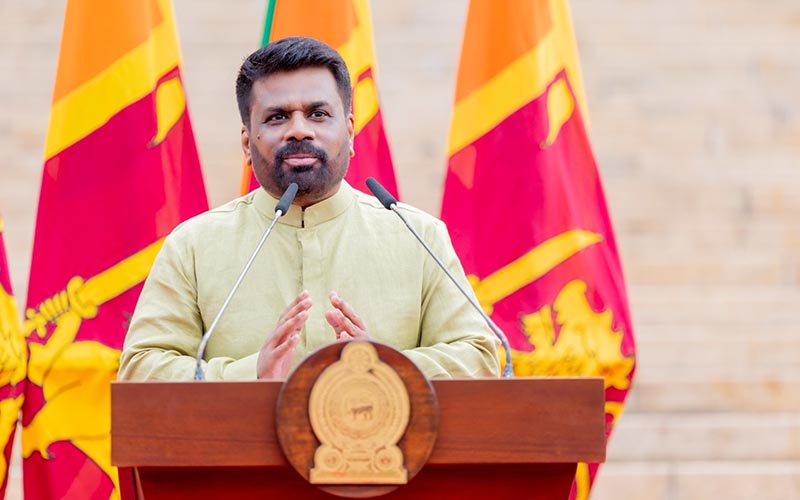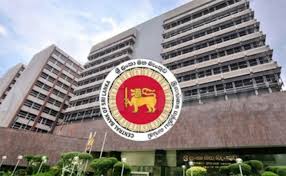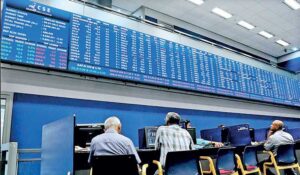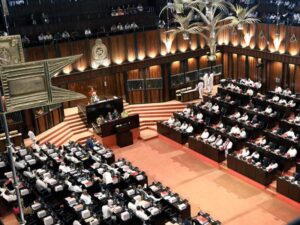
Sri Lanka’s Fragile Recovery Overshadowed by Weak Governance and Politics
- CNL Reporter
- August 27, 2025
- Weekly Economic Review
- Sri Lanka
- 0 Comments
Weekly Economic Review
Sri Lanka ended the week of August 23, 2025, in a characteristically paradoxical state: cautiously encouraging signals in financial markets were set against a backdrop of weak governance, political infighting, and short-term decision-making.
For many observers, the country appears to be slowly climbing out of the ruins of its economic crisis, but the question remains whether the current political class with vidictive attitudes has the maturity and discipline to protect that recovery.
Signs of Stability in Inflation and Money Markets
On the economic front, inflation remained subdued, though there were indications that pressures are building. The National Consumer Price Index (NCPI) showed that headline inflation rose to 0.7 per cent in July, compared to 0.3 per cent the month before.

The increase was largely driven by a 2.2 per cent rise in food prices, while the non-food category saw a mild deflation of 0.6 per cent. Core inflation, which strips out volatile elements, also crept up from 0.6 per cent in June to 0.9 per cent in July, a sign that underlying demand pressures are resurfacing.
Although these figures remain low compared to the double-digit spikes seen during the height of the 2022–2023 crisis, the upward movement is enough to draw caution.
Adding to the concern is the behaviour of international oil prices, which climbed during the week. Brent crude gained nearly two dollars a barrel as geopolitical tensions involving Russia and Ukraine continued to roil energy markets.
For a country like Sri Lanka, still struggling with a fragile balance of payments, such volatility in global commodities could easily undermine the stability gained in recent months.
The monetary sector showed signs of resilience. The average weighted prime lending rate eased to 8.07 per cent, indicating slightly easier borrowing conditions, while the average weighted call money rate edged up to 7.88 per cent.
Liquidity levels in the banking system were comfortable, with the surplus increasing to Rs. 116.4 billion from Rs. 88.3 billion the previous week.
The Central Bank of Sri Lanka (CBSL), in its biannual Monetary Policy Report released this week, attempted to strike a cautiously optimistic tone. The report highlighted a commitment to maintaining price stability, improving reserves, and guiding the financial system toward stability, though it also warned of fiscal risks and the ever-present threat of political interference.

Debt Markets and Fiscal Performance
The fiscal picture, though steady, remains heavily dependent on domestic borrowing. Treasury bill auctions continued to draw strong demand, with bids oversubscribed nearly twice, reflecting investor appetite for government paper.
However, foreign holdings of rupee-denominated securities slipped by one per cent, reflecting continued caution from overseas investors who remain wary of Sri Lanka’s longer-term credibility.
Secondary market activity in government securities surged by more than 40 per cent over the previous week, pointing to renewed liquidity.
Yet, beneath these figures lies an uncomfortable truth: Sri Lanka’s fiscal framework is still vulnerable. While tax collections have improved, expenditure commitments remain high, and political uncertainty clouds the prospects of sustained fiscal consolidation.
The government has made repeated commitments to debt sustainability and fiscal discipline, especially under the IMF-supported programme. However, critics argue that populist pressures and political compromises often override these commitments. The lack of a coherent, transparent plan for restructuring state-owned enterprises is one glaring example of this inconsistency.
Rupee Pressures and the External Sector
The external sector remains under strain. The rupee has depreciated by 3.1 per cent against the US dollar so far this year, despite interventions by the CBSL. Export performance has shown moderate recovery, particularly in garments and IT services, but import costs—especially fuel—continue to weigh heavily. With oil prices trending upwards and the global economy still volatile, the rupee remains exposed.

Remittances have been a stabilising factor, with inflows holding steady compared to 2024, but questions remain as to whether this alone can sustain external balances if oil and food import bills rise significantly in the months ahead.
Stock Market Optimism Masks Underlying Risks
Perhaps the brightest spot of the week was the performance of the Colombo Stock Exchange. The All Share Price Index gained 2.13 per cent to close at 20,649.20 points, while the S&P SL20 Index rose 3.31 per cent to 6,089.84 points. Daily turnover exceeded Rs. 11 billion, signalling robust investor participation.
Analysts suggest that the positive sentiment reflects expectations of stable interest rates, selective growth in corporate earnings, and optimism about the Central Bank’s steady hand. Yet, they caution that market enthusiasm may be masking underlying risks. Investors remain acutely aware that political instability, fiscal slippages, or external shocks could quickly erase these gains.

Beyond the numbers, the week was shaped by several key policy and governance developments. The much-discussed Electricity Act finally came into force, promising more affordable and sustainable power while reducing greenhouse gas emissions.
In principle, this represents a forward-looking reform in an energy sector long plagued by inefficiency. However, past failures raise doubts about the government’s ability to implement such measures effectively, particularly given the entrenched interests in the power sector.
The Cabinet also approved a bill to amend the Bank of Ceylon Ordinance, along with a proposal to expand the Auditor General’s powers steps that could strengthen governance if properly executed. But sceptics point out that Sri Lanka has a history of passing reforms on paper that falter in execution, often due to political interference.

In the corporate sector, Grant Thornton Advisors announced its acquisition of Stax, a Colombo-based consultancy, marking further consolidation in Sri Lanka’s professional services industry. This was seen as a sign of confidence in the local market, though it also highlighted the growing role of multinational firms in shaping Sri Lanka’s corporate landscape.
Meanwhile, the tourism sector witnessed controversy, with industry groups staging protests in Colombo against the issuance of temporary driving licenses to tourists. Protesters argued that the policy risked road safety and undermined established industry practices.

